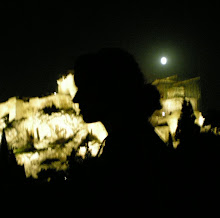This afternoon I sat in the plum tree in our front yard, writing in my journal about trees. From my spot behind the foliage, I heard someone approaching and shifted to see a friend of my sisters’. As the greeting came out of my mouth I knew she would be surprised, but it was too late to call the words back. Sure enough, she jumped. She said something along the lines of, “Oh, Hannah! You surprised me . . . we watched Prince Caspian last night, and when I heard you I thought, ‘The trees, the trees!’”
Actually, I was sitting in the tree, writing about trees because of Prince Caspian. Most of my family went to see the movie earlier today. It’s the trees that save the day. Trees save the day in The Lord of the Rings too. Those authors must have liked trees. I like trees too.
God made trees in such a way that we could enjoy them, both for their produce and for their beauty. When God planted the garden in
You know the story: that tree was the tree of the knowledge of good and evil, of which God commanded man not to eat. But man did. In doing so, Adam and Eve fell from their state of perfection into sin and death.
The role of trees in Scripture, however, is not finished. “He himself bore our sins in his body on the tree, that we might die to sin and live to righteousness. By his wounds you have been healed” (1 Peter
There is a tree at the end of the story too. On the New Earth in the New Jerusalem will be “the river of the water of life . . . also, on either side of the river, the tree of life with its twelve kinds of fruit, yielding its fruit each month. The leaves of the tree were for the healing of the nations . . . Blessed are those who wash their robes, so that they may have the right to the tree of life and that they may enter the city by the gates” (Revelation 22:1, 2, 14).


1 comment:
Great post
Post a Comment